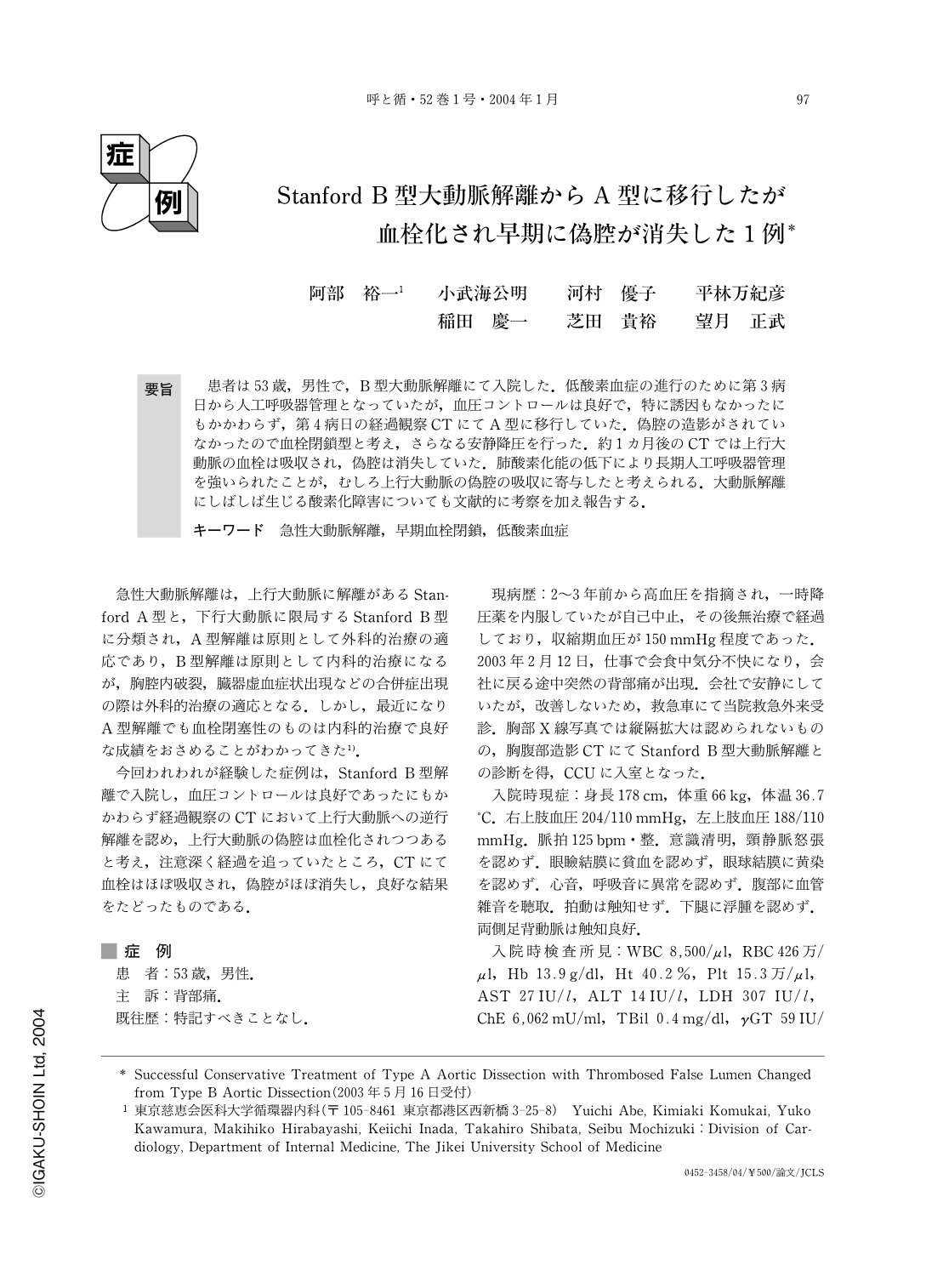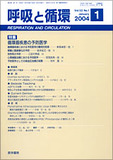Japanese
English
- 有料閲覧
- Abstract 文献概要
- 1ページ目 Look Inside
要旨
患者は53歳,男性で,B型大動脈解離にて入院した.低酸素血症の進行のために第3病日から人工呼吸器管理となっていたが,血圧コントロールは良好で,特に誘因もなかったにもかかわらず,第4病日の経過観察CTにてA型に移行していた.偽腔の造影がされていなかったので血栓閉鎖型と考え,さらなる安静降圧を行った.約1カ月後のCTでは上行大動脈の血栓は吸収され,偽腔は消失していた.肺酸素化能の低下により長期人工呼吸器管理を強いられたことが,むしろ上行大動脈の偽腔の吸収に寄与したと考えられる.大動脈解離にしばしば生じる酸素化障害についても文献的に考察を加え報告する.
Summary
A 53-year-old man was admitted to our hospital for backpainandwithcomputedtomography was diagnosed as having Stanford type B aortic dissection. Because of impaired oxygenation, mechanical ventiation was needed from day 3 to day 29. Although blood pressure was well controlled below 120 mmHg, computed tomography, at the day after intubation (day 4), revealed aortic dissection in the ascending aorta and also that the false lumen seemed to be thrombosed. The patient was treated conservatively. Computed tomography on day 39 showed that the false lumen of the ascending aorta had disappeared completely. In the present case, long-period impaired oxygenation needed mechanical ventilation and the consequent long-period bed rest. This might have contribute to the absorption of the thrombosed false lumen of the ascending aorta.

Copyright © 2004, Igaku-Shoin Ltd. All rights reserved.


